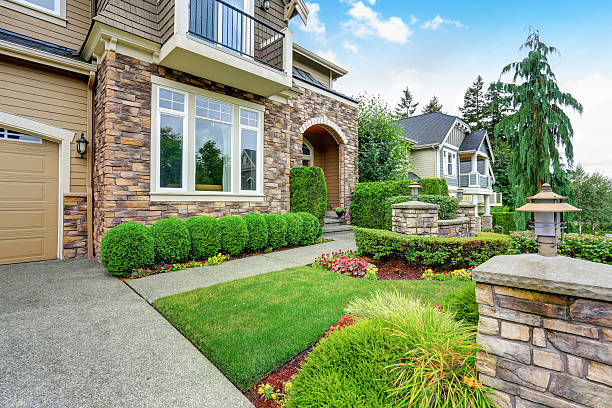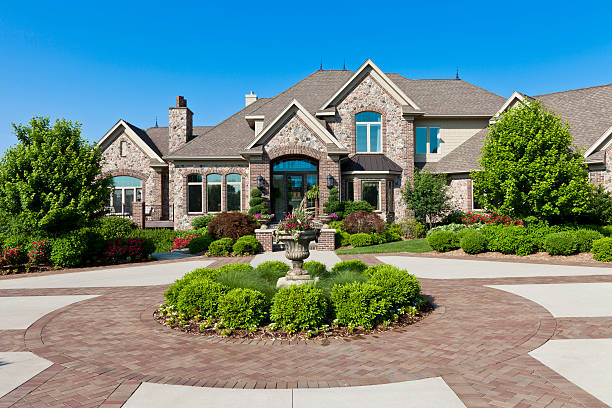From Concept to Creation: Modern Style Garden Design Tips
Explore garden design in modern style with essential tips, key elements, and plant selection for a stunning outdoor space.

Garden Design in Modern Style
Table of Contents
Understanding Modern Garden Design
Definition of Modern Garden Design
Modern garden design represents a departure from traditional aesthetics, emphasizing simplicity, clean lines, and functionality. It often incorporates minimalist principles, focusing on fewer elements but with a greater impact. This design approach seeks to create spaces that are not only visually appealing but also practical for everyday use. Key characteristics include the use of geometric shapes, a limited color palette, and the integration of natural and hardscaping features that create a seamless transition between indoor and outdoor living.

Historical Context
The evolution of garden design into modern styles can be traced back to the early 20th century, influenced by movements such as the Bauhaus and modernist architecture. These movements sought to break away from ornate designs of the past, focusing instead on functionalism and simplicity. Influential designers like Luis Barragán and Roberto Burle Marx emphasized the relationship between nature and architecture, paving the way for contemporary garden design.
Key Elements of Modern Garden Design
Clean Lines and Minimalism
One of the hallmarks of modern garden design is the emphasis on clean lines and minimalism. This approach reduces visual clutter, allowing the beauty of individual elements to shine. The use of straight pathways, angular plant beds, and unobtrusive furnishings can create a sense of order and tranquility. Minimalistic designs often incorporate a limited number of materials and colors, resulting in a cohesive and harmonious space.

Use of Geometric Shapes
Geometric shapes play a significant role in modern garden design, adding structure and visual interest. Pathways, garden beds, and water features can all utilize geometric patterns to create a modern aesthetic. For example, square or rectangular raised beds can be arranged in symmetrical patterns, while circular patios can provide a focal point in the landscape. These shapes not only enhance the overall design but also facilitate movement and organization within the garden.
Sustainable Practices
Sustainability is increasingly important in modern garden design. Incorporating eco-friendly materials, such as reclaimed wood or permeable paving, helps reduce environmental impact. The use of native plants is also a key aspect, as these species require less water and maintenance while supporting local wildlife. Modern gardens often include features like rain gardens or green roofs, which manage stormwater and improve biodiversity in urban areas.

Color Palettes
The color palette in modern gardens is typically understated, focusing on neutral tones, monochromatic schemes, or simple contrasts. This approach enhances the natural beauty of the garden while creating a calming atmosphere. Popular colors include whites, grays, and muted greens, often accented with vibrant blooms in selected areas. The strategic use of color can draw attention to specific features or plantings, providing depth and interest without overwhelming the senses.
Essential Features in Modern Gardens
Hardscaping Elements
Hardscaping is a vital component of modern garden design, providing structure and functionality. Elements like patios, decks, and walkways not only facilitate movement but also create spaces for relaxation and entertainment. When choosing materials for hardscaping, consider options such as concrete, stone, or composite decking, which offer durability and aesthetic appeal. These materials can be used to create defined areas for dining, lounging, or enjoying the surrounding landscape.

Water Features
Water features add a sense of tranquility and can serve as a focal point in modern gardens. Options include ponds, fountains, or even small reflecting pools that enhance the overall aesthetic while providing a soothing sound element. When designing water features, consider their placement in relation to other garden elements, ensuring they complement rather than compete with the surrounding landscape. Integrating aquatic plants can also enhance the beauty and ecological value of these features.
Outdoor Living Spaces
Modern garden design emphasizes the importance of outdoor living spaces, creating seamless transitions between indoor and outdoor areas. This can be achieved by incorporating features like outdoor kitchens, dining areas, and comfortable seating arrangements. When selecting furniture, opt for durable, weather-resistant materials that complement the overall design aesthetic. Additionally, consider adding lighting to enhance usability during the evening and create a warm, inviting atmosphere.

Plant Selection for Modern Gardens
Choosing the Right Plants
Selecting the right plants is crucial for achieving a successful modern garden design. Low-maintenance plants are often preferred, allowing homeowners to enjoy their outdoor spaces without excessive upkeep. Look for varieties with interesting textures and forms, such as ornamental grasses, succulents, or perennials with architectural shapes. Grouping plants with similar care needs can simplify maintenance and enhance the overall design.
Incorporating Edible Plants
Modern gardens can also embrace the trend of growing edible plants, blending aesthetics with functionality. Incorporating fruits, vegetables, and herbs not only provides fresh produce but also adds visual interest to the landscape. Consider integrating edible plants into ornamental beds, using attractive varieties that complement the overall design. For instance, growing tomatoes or peppers in raised beds can create a vibrant display while serving a practical purpose.

Tips for Successful Modern Garden Design
Planning Your Space
Effective planning is essential for successful modern garden design. Start by conducting a thorough site analysis, taking into account factors such as sunlight, wind, and soil conditions. This information will guide your design choices and plant selections. Use design tools like garden planning software or sketching to visualize your ideas, ensuring a coherent layout that maximizes the potential of your space.
DIY vs. Hiring Professionals
Deciding whether to tackle your garden design as a DIY project or hire professionals depends on your skills and the complexity of the project. Simple tasks like planting and maintenance can often be handled by homeowners, while larger designs may benefit from professional expertise. Landscape designers can provide valuable insights and help create a cohesive plan that aligns with your vision, ensuring the best possible outcome for your modern garden.

Common Mistakes to Avoid in Modern Garden Design
Overcrowding Plants
One common mistake in modern garden design is overcrowding plants, which can lead to poor air circulation and competition for nutrients. To avoid this, ensure proper spacing based on each plant's mature size and growth habits. Planning for growth will create a balanced and harmonious garden that allows each element to thrive, resulting in a visually appealing and healthy landscape.

Ignoring Local Climate
Ignoring the local climate is another pitfall to avoid. It’s essential to adapt your design to suit environmental conditions, ensuring that selected plants will thrive in your area. Researching native plants and climate-appropriate species will enhance the sustainability of your garden and reduce maintenance needs, allowing you to create a beautiful space that aligns with the natural environment.

Conclusion
In summary, **garden design in modern style** offers a unique approach to creating outdoor spaces that are functional, aesthetically pleasing, and sustainable. By embracing key elements such as clean lines, geometric shapes, and low-maintenance plants, homeowners can transform their gardens into serene retreats that reflect contemporary living. Whether you choose to tackle the design yourself or enlist professional help, the principles of modern garden design can guide you in creating a beautiful outdoor oasis. Take the time to plan your space thoughtfully, select the right plants, and consider the essential features that will enhance your garden experience.
FAQ
What are the main characteristics of modern garden design?
Modern garden design is characterized by clean lines, minimalism, geometric shapes, and sustainable practices. It emphasizes functionality and aesthetic appeal while focusing on the integration of natural and hardscaping elements.
How can I make my garden more sustainable?
To make your garden more sustainable, consider using native plants, incorporating eco-friendly materials, and implementing water-efficient practices such as rain gardens or drip irrigation systems.
What plants are best for a modern garden?
Best plants for a modern garden include low-maintenance varieties like ornamental grasses, succulents, and perennials with interesting textures and forms. Edible plants can also be integrated for added functionality and beauty.
How do I start planning my modern garden?
Begin planning your modern garden by conducting a site analysis, considering factors such as sunlight, wind, and soil conditions. Use design tools or sketches to visualize your ideas and create a cohesive layout.
Can I combine modern design with traditional elements?
Yes, you can successfully blend modern design with traditional elements. Focus on maintaining a balanced aesthetic by selecting compatible materials and features that complement both styles while preserving the integrity of each.
What's Your Reaction?
















